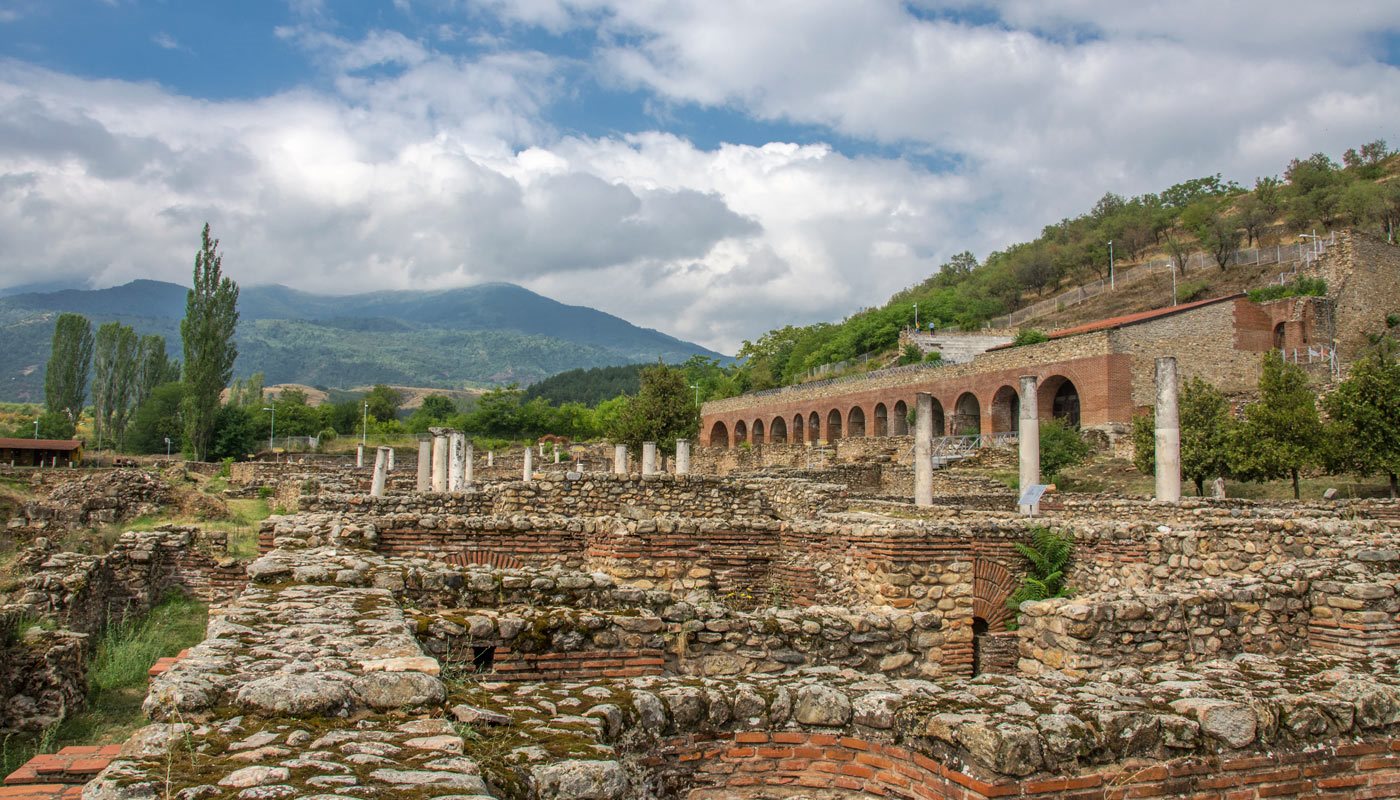
Welcome to the world of Heraclea Lyncestis, a hidden gem among ancient landmarks. This remarkable archaeological site, located in the present-day country of North Macedonia, is brimming with extraordinary historical significance and fascinating discoveries. In this article, we will embark on a journey to uncover 15 extraordinary facts about Heraclea Lyncestis, shedding light on its ancient glory and shedding light on its importance in the ancient world. From its origins as a Hellenistic city to its heyday during the Roman period, Heraclea Lyncestis has a rich and complex history that continues to captivate historians and archaeologists alike. So, get ready to delve into the depths of this ancient treasure trove and discover the secrets that lie hidden beneath its hallowed grounds.
Key Takeaways:
- Heraclea Lyncestis was a bustling ancient city with rich Hellenistic heritage, magnificent architecture, and well-preserved Roman theater, making it a must-visit for history enthusiasts and curious minds.
- The city’s name, derived from the Greek hero Heracles and the region “Lyncestis,” reflects its extraordinary history, significant archaeological discoveries, and UNESCO World Heritage Site status, ensuring its preservation for future generations.
The Ancient City at the Crossroads
Heraclea Lyncestis, located in present-day North Macedonia, was a thriving ancient city that served as a crucial crossroads between the Eastern Roman Empire and the Western Roman Empire.
Its Rich Hellenistic Heritage
Heraclea Lyncestis was founded in the 4th century BC by King Philip II of Macedon, father of Alexander the Great, and was heavily influenced by Hellenistic culture.
A Hub of Trade and Commerce
Thanks to its strategic location, Heraclea Lyncestis became a bustling center for trade and commerce, attracting merchants and travelers from far and wide.
Magnificent Architecture
The city was adorned with magnificent architecture, including stately columns, intricate mosaics, and well-preserved amphitheaters, showcasing the architectural prowess of the time.
A Testament to Roman Engineering
Heraclea Lyncestis boasted a sophisticated water supply system, featuring aqueducts and wells, demonstrating the advanced engineering skills of the Romans.
The Roman Theater
One of the standout attractions of Heraclea Lyncestis is its remarkably well-preserved Roman theater, which could seat up to 3,000 spectators and hosted various performances and events.
Houses with Intricate Mosaics
The city is renowned for its impressive houses with intricate mosaic floors, depicting mythological scenes, geometric patterns, and portraits of important figures.
Origins of the Name
The name “Heraclea Lyncestis” is derived from the Greek hero Heracles (Hercules) and “Lyncestis,” the region in which the city was located.
Significant Archaeological Discoveries
Excavations in Heraclea Lyncestis have unearthed a treasure trove of archaeological artifacts, providing invaluable insights into the daily lives and customs of its ancient inhabitants.
Connection to Early Christianity
Heraclea Lyncestis played a role in early Christianity, with the presence of Christian basilicas indicating the spread of the religion in the region during the Byzantine period.
Turkish Rule and Influence
During the Ottoman Empire, Heraclea Lyncestis experienced significant Turkish rule and cultural influence, leaving behind a unique blend of architectural styles and traditions.
A UNESCO World Heritage Site
Recognizing its outstanding universal value, Heraclea Lyncestis was designated as a UNESCO World Heritage Site in 1980, preserving its historical and cultural significance for future generations.
Tourist Attractions and Museums
Today, Heraclea Lyncestis is a popular tourist destination, offering visitors the chance to explore its archaeological park, museum, and marvel at its stunning ancient ruins.
Films and TV Series
Heraclea Lyncestis has served as a backdrop for various films and TV series, allowing viewers to experience the city’s rich history and immerse themselves in its ancient ambiance.
Preserving a Glorious Past
Efforts are ongoing to ensure the preservation and conservation of Heraclea Lyncestis, safeguarding its extraordinary history and heritage for generations to come.
Conclusion
Heraclea Lyncestis is an extraordinary ancient city that offers a glimpse into the rich history of Macedonia. With its impressive archaeological remains and captivating stories, it continues to attract visitors from around the world. From its strategic location to its well-preserved mosaics, Heraclea Lyncestis stands as a testament to the advanced civilization that thrived in this region centuries ago.
Exploring this remarkable landmark allows us to unravel the mysteries of the past and appreciate the ingenuity and culture of the people who once called it home. Whether you are an avid history lover or simply curious about the ancient world, a visit to Heraclea Lyncestis is sure to leave you in awe.
FAQs
1. How old is Heraclea Lyncestis?
Heraclea Lyncestis dates back to the 4th century BC. It was founded by Philip II of Macedon, the father of Alexander the Great.
2. Can you still see the ancient mosaics in Heraclea Lyncestis?
Yes, many well-preserved mosaics can still be admired in Heraclea Lyncestis. These intricate works of art depict various scenes from mythology, daily life, and historical events.
3. Is Heraclea Lyncestis easily accessible?
Yes, Heraclea Lyncestis is easily accessible by road. It is located near the modern city of Bitola in Macedonia and can be reached by public transportation or private vehicle.
4. Are there guided tours available in Heraclea Lyncestis?
Yes, guided tours are available in Heraclea Lyncestis. Knowledgeable guides can provide detailed information about the history and significance of the site, enhancing your visit.
5. Can I take photographs in Heraclea Lyncestis?
Yes, visitors are allowed to take photographs in Heraclea Lyncestis. However, some restrictions may apply in certain areas to preserve the delicate mosaics and artifacts.
Was this page helpful?
Our commitment to delivering trustworthy and engaging content is at the heart of what we do. Each fact on our site is contributed by real users like you, bringing a wealth of diverse insights and information. To ensure the highest standards of accuracy and reliability, our dedicated editors meticulously review each submission. This process guarantees that the facts we share are not only fascinating but also credible. Trust in our commitment to quality and authenticity as you explore and learn with us.
